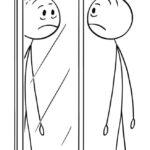Focus on Your “Why” walk to be walking alone
- Focus on Your “Why” walk to be walking alone
- Becomes Clear
- Happy to Happier
- Your Path, Your Rules
- Walking alone for opportunity
- How to Practice — Step by Step
- Think first
- Small Steps
- Walking alone meaningful
- Endnote
- Is walking alone good for your mental health?
- How can I make walking alone more meaningful?
- Is it okay to think too much while walking alone?
- What should I think about when walking alone?
- Can walking alone make me happier?
- How do I stop feeling lonely when walking alone?
- What does “walking alone with small steps” mean?
- How can I turn walking alone into a daily habit?
- What’s the difference between walking for exercise and walking for reflection?
- Can walking alone improve focus at work or study?
Walking alone can be one of the most powerful ways to reconnect with yourself—especially when you walk with your “why” in mind. Your “why” is your purpose, the reason you keep going even when you’re alone. It’s not about isolation; it’s about intention. When you walk alone, you step away from distractions, comparisons, and external noise, allowing your inner voice to speak clearly.
Becomes Clear
When you walk alone, you create space to listen — not to the world, but to yourself. You notice your thoughts more clearly, your emotions more deeply, and your dreams more honestly. You start to realize that not every path needs company, and not every journey needs to be explained. Some walks are simply for you — to breathe, to think, to feel alive.
There’s quiet power in walking alone. It’s the kind of peace that comes when you stop rushing to fit in and start focusing on who you’re becoming. Sometimes solitude is where strength grows, where direction forms, and where your “why” becomes clearer.
Happy to Happier
Walking alone is one of the simplest yet most powerful ways to move from being content to being happier. It’s not about escaping the situation—it’s about reconnecting with yourself. When you walk alone, every step becomes a small act of self-care, a gentle reminder that peace doesn’t always come from company but often from solitude.
Now you listen to your voice. You start to notice that think never see again—the sound of the wind, the bird chirping, and the feeling of your inward happiness. These small, beautiful details remind you that happiness isn’t far away; it’s already around you, waiting to be felt.
Each solo walk is a journey inward—from noise to calm, from stress to ease, from happy to happier. Because when you learn to enjoy your own company, you realize you carry everything you need to feel complete. Happiness doesn’t need an audience—it just needs presence, purpose, and a peaceful walk with yourself.

Your Path, Your Rules
No one decides which way to go—you do. You listen to your intuition, follow what feels right, and trust that your steps are leading you somewhere meaningful. The beauty of walking alone is that you can take detours, stop when you want, and explore what truly excites you without needing anyone’s approval.
Some days you’ll move fast, full of energy and ambition. Other days, you’ll slow down to breathe, reflect, and simply exist. Both are valid. Walking alone teaches you to respect your own timing—not the others schedule, not society’s expectations.
Your path doesn’t have to look like anyone else’s. Maybe success for you isn’t about reaching a destination but about enjoying the journey—the freedom, the lessons, and the quiet confidence that grows with every step.
So when you walk alone, remember this: it’s your path, your rules. You decide how far to go, when to rest, and what matters most along the way. The road may be quiet, but it’s yours—and that’s where true power and peace begin.
Walking alone for opportunity
How to turn solo walks into opportunity-making sessions
Set an intention before the walk. (e.g., “I’m looking for one idea to expand my income,” or “I want one new creative project.”)
Use the walk for idea generation, not evaluation. Let thoughts flow—collect ideas without judging. Save the evaluation for later.
Bring a tiny notebook or a phone note. Capture sparks immediately. One line is enough.
Do one small experiment a week. Send one message, post one idea, take one short course, or offer a free trial of your skills. Measure what you learn.
Turn clarity into action within 48 hours. Pick the best idea from your walk and take one concrete step—even a 10-minute one. Momentum matters.
Review every two weeks. Which experiments worked? What opened a door? Pivot fast.
| Day | Walk done | Idea captured | Micro-step taken |
|---|---|---|---|
| 1 | |||
| 2 | |||
| 3 | |||
| 4 | |||
| 6 | |||
| 6 | |||
| 7 |
How to Practice — Step by Step
Walking alone is one of the most accessible, underrated rituals you can add to life. No special equipment, inexpensive, and available almost anywhere—yet when done with intention, a short solo walk can clear mental clutter, spark ideas, and steady emotions. This post shows how to turn aimless wandering into a reliable practice: practical steps, a 7-day starter plan.
7-Day “Walk-to-Practice” starter plan
Day 1 — 10–20 min: Set an intention, collect ideas. Capture one line.
Day 2 — 10–20 min: Revisit Day 1 idea; sketch a 3-bullet micro-plan.
Day 3 — 15–25 min: Test one tiny step (send a message, draft a post, try a routine tweak).
Day 4 — 10–20 min: Reflect on the result; adjust the plan.
Day 5 — 20–30 min: Walk a new route; notice what changes.
Day 6 — 15–30 min: Reach out to one person with a concise question or share an idea.
Day 7 — 20–40 min: Review the week, choose one idea to continue, and plan next 14 days.
Think first
Walking alone is a gift. But when you think first, you unwrap it with intention. You don’t just walk—you grow. You don’t just wander—you find your way.
When you think first, walking alone becomes:
A tool for problem-solving.
A source of creative ideas.
It serves as a means to reestablish a connection with your inner voice.
A reminder that you are enough, just as you are.
“Think First” walking reminds us that we don’t always need a destination to move forward. Sometimes, reflection itself is the journey. Each step becomes a quiet conversation with yourself—one that helps you see more clearly, breathe more deeply, and live more intentionally.
Small Steps
Walking alone with small steps becomes not escape but rehearsal: a manageable, repeatable way to think more clearly, create more often, and return to life with steadier, kinder attention. This solitary practice is a safe container for the mind, a low-stakes simulation where we can work through conversations, untangle complex problems, and stumble upon creative ideas without the pressure of an audience or an immediate outcome.
Each quiet walk is a draft of a better response, a sketch of a new project, or a gentle run-through of our own emotions. We are not running away; we are practicing. We are training our minds and emotions in a safe space so that when we go back to our daily lives—into the meeting room, the creative project, the hard conversation, or the family dinner—we are not frazzled, but instead have a steadier hand and a kinder, more attentive presence. The path we walk alone, step by small step, is where we learn the lines for the parts we are meant to play in the world.
Walking alone meaningful
Walking alone is one of the most meaningful practices you can give yourself—a quiet act of self-connection in a world that rarely slows down. It’s more than movement; it’s a conversation with your thoughts, emotions, and purpose. When you walk alone, you’re not escaping others; you’re returning to yourself. The rhythm of your footsteps becomes a kind of meditation—helping you process feelings, organize ideas, and find peace in simplicity.
Each step invites reflection: where you’ve been, where you’re going, and what truly matters along the way. In solitude, you begin to notice the small details—the warmth of sunlight, the sound of wind, the stillness between breaths—and realize that meaning often hides in these ordinary moments. Walking alone teaches you that happiness and clarity don’t require noise or company; they grow quietly when you make space to listen, observe, and just be.
Endnote
Walking alone is not about isolation—it’s about inner alignment. It’s a reminder that even without company, you are never truly alone; your thoughts, your breath, and your heartbeat walk with you. Each solo step strengthens self-trust, deepens awareness, and invites clarity. The path may be quiet, but it is rich with meaning—a space where reflection turns into wisdom, and stillness turns into strength. When you walk alone, you return not just lighter in mind but fuller in soul—grounded, calm, and quietly confident in where you are heading. So take that step, even if it’s small. The road ahead begins with you.
Is walking alone good for your mental health?

Yes. Walking alone allows your mind to slow down, release stress, and process emotions more naturally. It helps you think clearly, improves creativity, and reduces anxiety. Solitude while walking gives your brain space to rest and reset, making it a simple yet powerful form of mental self-care
How can I make walking alone more meaningful?
Set a small intention before your walk—like reflecting on gratitude, solving a problem, or observing beauty. Leave your phone behind, walk slowly, and notice your surroundings. When you finish, write one small insight or action you want to take. That’s how reflection becomes growth.
Is it okay to think too much while walking alone?

Yes—but try to think lightly. If your mind starts to spiral, shift focus to your senses: the air, the sounds, the rhythm of your steps. Walking helps organize thoughts, but if it turns into overthinking, grounding yourself in the present moment restores calm.
https://happyconditionapply.com/its-okay-to-not-be-okay-meaning/
What should I think about when walking alone?
Anything that feels unfinished—a decision, an idea, or a dream. Or, let your thoughts wander freely without pressure. You can use “themes” for each walk, like gratitude, purpose, creativity, or problem-solving. The key is to allow gentle reflection, not forced thinking.
Can walking alone make me happier?

Absolutely, walking alone can enhance your mood and overall well-being. It provides an opportunity for self-reflection and a break from daily stresses, allowing you to connect with your thoughts and surroundings in a meaningful way.
How do I stop feeling lonely when walking alone?
Shift the mindset: you’re not alone; you’re with yourself. Use the time to reconnect with your inner thoughts. Play with reflection prompts like “What am I grateful for right now?” or “What’s one thing I can let go of today?” Over time, solitude starts to feel like peace, not loneliness.
What does “walking alone with small steps” mean?
It means moving slowly and intentionally—focusing on the process, not the distance. Each small step becomes a moment to breathe, think, or notice. The goal isn’t speed or mileage; it’s mindfulness, self-trust, and the calm that comes from gentle forward motion.
How can I turn walking alone into a daily habit?
Start small: 10–15 minutes at the same time each day. Pair it with something you already do—like your morning tea or post-lunch break. Consistency matters more than duration. Once it feels natural, you can extend your walks or add themes for reflection.
What’s the difference between walking for exercise and walking for reflection?
Walking for exercise focuses on pace, steps, or heart rate. Walking for reflection focuses on awareness, thoughts, and calm. Both are beneficial—but when you walk slowly and intentionally, you engage your mind, heart, and body together.
Can walking alone improve focus at work or study?
Yes. Solo walks clear mental noise and reset your attention span. They act like a “mental refresh button.” Many people find that short walks help them return to tasks with sharper concentration and better problem-solving energy.



Leave a Reply